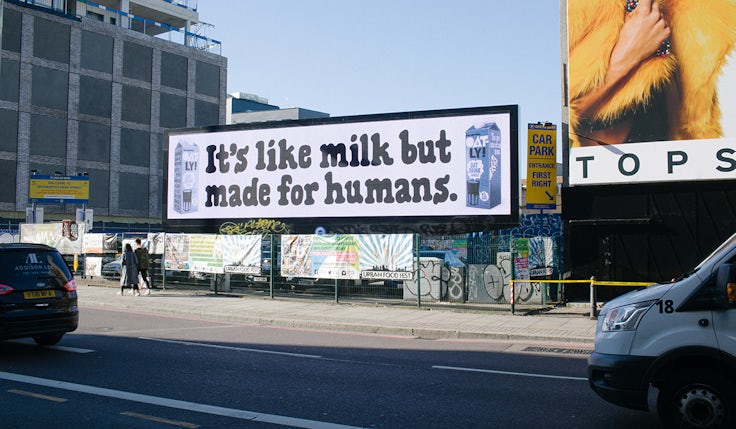Arla Foods and E.ON on finding the right in-housing solution for their brands
Taking control of their marketing functions remains a highly appealing proposition for many brands, but new data suggests the reality often falls short of expectations.
 For brands looking to gain more control over their data and marketing processes, moving functions from external agencies in-house can sound like the ideal solution. But it can also bring operational challenges, skills gaps, and overly complex processes, meaning reality often falls short of expectations.
For brands looking to gain more control over their data and marketing processes, moving functions from external agencies in-house can sound like the ideal solution. But it can also bring operational challenges, skills gaps, and overly complex processes, meaning reality often falls short of expectations.
Finding the right in-house model is therefore a must. In 2018 Arla Foods, maker of Lurpak butter and Cravendale milk, launched its own in-house creative and media agency, The Barn. Led by senior director and global head of the agency, Thomas Heilskov, The Barn competes with external agencies for company brand projects.
For Heilskov, one of the most important things a brand must do before undergoing an in-housing journey is to “set the right ambition and understand the type of agency you’re building”.
“There’s a big risk that you can sit between two chairs – if you’re not very clear on what you’re striving for, you’re not really providing the right services in comparison to external agencies, but you are also creating something that is too complicated,” he says.
Arla Foods began its own in-housing journey after consolidating its martech stack and realising its brands weren’t achieving the efficiencies they wanted across its markets. The business also felt its existing agency model was “broken” and no longer fit for the rapidly evolving digital landscape.
I was worried about losing that external perspective that agencies bring – they absolutely bring energy and knowledge to the table.
Scott Somerville, E.ON
The Barn was born from the desire to build more agility and transparency into the business’s marketing, while establishing a “learning loop” between media and creative – something Heilskov didn’t believe could be done through external agencies alone.
“One of my frustrations at that time was that we were starting all over again too often. We weren’t building on past learnings, so part of the aspiration was to build an agency where continuous learning is at the core of the agency,” he explains.
Since launch, The Barn has grown from eight full-time employees to 120. It maintains a “strong and functional relationship” with the external media and creative agencies it competes for work with, and which are still used by some Arla brands.
Offering advice for brands looking to set up a company-run in-house agency, Heilskov says it is important to not to focus solely on output, but to adopt the mindset of an agency and business owner.
“One of the mistakes we made at the beginning was under-prioritising project management and account management because we were too focused on output,” he admits.
Now The Barn has proven itself to be a “super strong operating model”, the agency leader adds, which has become increasingly relevant over the difficult economic challenges of the past few years.
Why Polestar is bringing creativity in-house as it pursues the next stage of growth
Preserving fresh perspectives
On the other hand, renewable energy brand E.ON’s in-housing journey led it away from an internally managed agency. The brand has instead settled on a hybrid solution, as it also pursues a more agile set up to boost its marketing campaigns.
Scott Somerville, head of brand and marketing at E.ON, says the business was initially sceptical about what benefits in-housing could bring – in part because of the “great service” it had already received from agencies, and in part due to concerns around budgeting and investment compared to output.
“I was worried about losing that external perspective that agencies bring – they absolutely bring energy and knowledge to the table,” he explains.
“We could never quite shake the feeling that if we did fully in-house, we would lose that variety of thought and that difference.”
However, after taking over rival Npower, E.ON decided to explore the how it could reap the benefits of in-housing while preserving those “fresh perspectives”. Working with marketing and commercial advisory Alchemists, the business determined that its best option was to “streamline” its agency model and build an in-house capability managed by an external agency, avoiding the operational complexity of managing an internal agency itself.
Agency Oliver has since been appointed to build the brand a creative production in-house solution.
Expectations vs reality
While Arla Foods and E.ON may have found the right in-house models for their businesses, for many brands in-housing proves a less fruitful endeavour than anticipated. Heilskov and Somerville’s comments were made as part of the State of In-housing 2023 report, which reveals that only 40% of brands experience greater speed and nimbleness as a result of in-housing, compared to the 93% that expected it.
Conducted by Alchemists in collaboration with ISBA and CvE, the survey of 20 UK-based global businesses with marketing budgets of between £5 to £50m – all of which have in-housed or explored in-housing – finds 93% also expected improved cost effectiveness. In reality, this was experienced by less than two-thirds of respondents.
Nevertheless, nearly two-thirds plan to in-house more of their marketing activity this year, suggesting the potential benefits still hold considerable appeal.
However, almost 75% said they didn’t know how to bring data and analytics in-house. Less than a third are currently in charge of their own functions in these areas, though 58% aim to manage their tech operations in-house in the long term.







